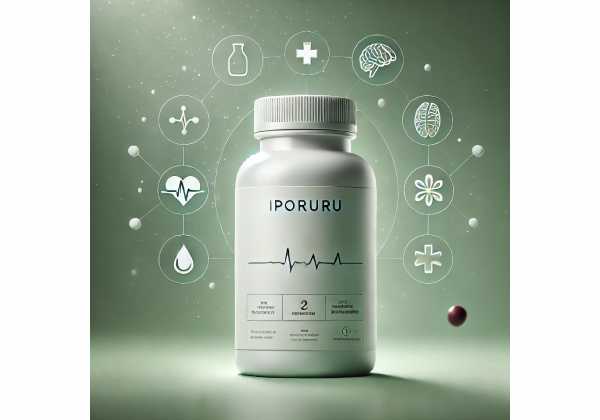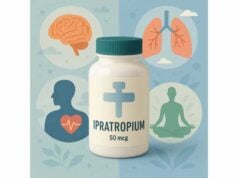
Iporuru (Alchornea castaneifolia) is a little-known Amazonian shrub with a long history in Peruvian and Brazilian folk medicine. Healers traditionally prepare the bark and leaves for joint pain, muscle aches, stomach discomfort, and overall vitality. Modern lab studies report polyphenols (like epicatechin, gallic acid, and ellagitannins) and other constituents that may influence inflammatory pathways and gastric protection. Human trials are still lacking, so expectations should be realistic and safety-centered. If you are considering iporuru, treat it like any potent botanical: choose verified products, introduce it slowly, and watch for interactions with your medicines. This guide gathers what’s known—from traditional preparation to emerging chemistry and preclinical findings—so you can make an informed, risk-aware decision with your clinician.
Key Insights
- Traditional use targets joint discomfort and gastric irritation; modern lab data suggest anti-inflammatory and gastroprotective actions.
- Safety data in humans are limited; avoid during pregnancy and while breastfeeding.
- Typical product ranges: capsules 300–500 mg, 1–3 times daily; tincture 1:3 at 2–4 mL up to 3 times daily.
- People on anticoagulants, antiplatelets, or NSAIDs should avoid or use only with medical guidance.
Table of Contents
- What is iporuru and how it might work?
- Potential benefits people look for
- How to use iporuru day to day
- Quality, interactions, and combining wisely
- Safety, side effects, and who should avoid it
- What the research actually shows
What is iporuru and how it might work?
Iporuru (Alchornea castaneifolia A. Juss.), also called “iporuru” or “sarã,” is a Euphorbiaceae tree or large shrub native to Amazonian riverbanks. In traditional practice, the bark and leaves are macerated in aguardiente, decocted in water, or powdered and taken as teas and tonics. The plant’s reputation centers on easing aches after long treks, soothing “cold” muscles and joints, and calming an irritated stomach.
From a modern perspective, the most informative data come from phytochemistry and animal or ex vivo experiments. Leaf and bark extracts contain a suite of polyphenols (e.g., epicatechin, myricetin glycosides, proanthocyanidin A1/A2, gallic acid) and complex ellagitannins. These compounds are well known, across species, for modulating oxidative stress, influencing cyclooxygenase (COX) activity, and affecting prostaglandin balance—mechanisms that may relate to perceived relief in sore joints or tendons. In stomach models, hydroethanolic extracts have shown antiulcer activity, with signals tied to protective mediators (e.g., somatostatin and prostaglandins). In antimicrobial screens, iporuru extracts have demonstrated activity against certain microbes, though potencies vary by solvent, plant part, and organism.
All that said, iporuru is under-researched. There are no robust human trials defining standardized formulations, effect sizes, or long-term safety. As with many Amazonian botanicals, chemistry can vary by geography, harvest technique, and post-harvest handling. If you decide to explore iporuru, approach it as an experiment guided by evidence and prudence: start low, track your response, and coordinate with a healthcare professional—especially if you take medications or have chronic conditions.
Potential benefits people look for
Musculoskeletal comfort. The best-known traditional use of iporuru is for sore joints and muscles after heavy physical effort or chronic stiffness. Polyphenols and proanthocyanidins in the plant may contribute to perceived relief by moderating inflammatory signaling and oxidative stress. Users often report gradual, background support rather than rapid numbing. If benefits appear, they typically emerge over days to weeks of consistent use.
Gastric support. Hydroethanolic extracts of Alchornea species (including A. castaneifolia) have been studied in animal models of ulcers. Signals include reduced lesion formation and effects linked to protective gastric mediators. In real life, that translates to people using small amounts before meals or at bedtime for “acid” discomfort. This is not a replacement for evaluation of persistent heartburn, dark stools, or stomach pain—red-flag symptoms need medical care.
Everyday resilience. Iporuru is sometimes taken as a “tonic,” meaning a daily, low-dose preparation for perceived vigor or recovery. In practice, any “tonic” effect likely rides on improved comfort and sleep from calmer aches rather than direct stimulation. Unlike caffeine or Yohimbe, iporuru is not a stimulant; if you feel jittery, stop and reassess dose and timing.
Microbial balance (preliminary). Laboratory screens have shown antimicrobial activity of Alchornea extracts against selected pathogens. This does not mean iporuru treats infections in humans. At most, it suggests a rationale for traditional topical or oral uses as part of broader care. Do not delay antibiotics or professional evaluation for infections.
Sexual wellness (traditional). Some communities regard iporuru as supportive of male sexual function. Modern studies do not confirm specific mechanisms in humans. If any benefit occurs, it may be indirect—less pain, better sleep, and lower stress can nudge libido upward.
Who may notice benefits. People with activity-related aches, morning stiffness, or occasional gastric irritation may be the most likely to report subtle improvements. Those expecting quick analgesia (like ibuprofen) or dramatic performance boosts will likely be disappointed.
Expectations to set. Evidence remains preclinical and traditional. If you try iporuru, establish a time-limited trial (e.g., 2–4 weeks), track outcomes you care about (e.g., morning joint stiffness rating, sleep quality, number of antacid tablets required), and stop if there’s no meaningful change.
How to use iporuru day to day
Forms you’ll see
- Dried bark or leaf (tea/decoction): The classic preparation. Bark is typically simmered longer (20–30 minutes); leaves need gentler steeping (10–15 minutes).
- Powdered capsules or tablets: Convenient for consistent daily dosing.
- Tinctures (alcohol-based 1:3 to 1:5): Rapid to take, easy to split into smaller doses; taste can be robust.
- Topical macerations: Traditional rubs for knees, shoulders, or lower back.
Practical dosing guidelines
There is no standardized clinical dose. Sensible consumer ranges mirror general herbal practice for similar botanicals:
- Capsules: 300–500 mg dried bark or leaf extract, 1–3 times daily with food.
- Tincture (1:3 to 1:5): 2–4 mL up to 3 times daily. For sensitive stomachs, dilute in warm water.
- Tea (bark decoction): 1–2 teaspoons (about 2–4 g) of cut bark simmered in 250–300 mL water for 20–30 minutes; strain and drink once or twice daily.
- Tea (leaf infusion): 1–2 teaspoons (about 1–2 g) steeped 10–15 minutes; once or twice daily.
Start at the low end for a week to gauge tolerance. Increase gradually only if needed. For topical use, test a small area first; discontinue if skin becomes red or itchy.
Timing tips
- For joint comfort, many prefer divided doses (morning and evening) or a small dose 30–60 minutes before activity.
- For gastric support, a small dose 15–30 minutes before meals or at bedtime may feel most soothing.
- Avoid late-evening tinctures if alcohol content disrupts your sleep; switch to tea or capsules instead.
Stacking and combinations (cautiously)
Traditional formulas often pair iporuru with plants like cat’s claw (Uncaria) or ginger. While combinations can be reasonable, introduce one change at a time so you can attribute effects and side effects. If you already use NSAIDs, anticoagulants, or antiplatelets, do not add combinations without medical advice (see safety section).
When to stop or seek care
- Persistent or worsening pain, swelling, fever, black stools, vomiting blood, chest pain, or shortness of breath require urgent medical evaluation.
- If you see no benefit within 2–4 weeks at moderate doses, discontinue rather than escalating indefinitely.
Quality, interactions, and combining wisely
Quality checks that matter
- Botanical identity: Look for the Latin binomial Alchornea castaneifolia on the label (spelling variants like “castaneaefolia” appear in older literature). Avoid products labeled only “Alchornea” or “iporuru” without species confirmation.
- Part and solvent: The plant part (bark vs leaf) and extraction method (hydroethanolic, aqueous, tincture) change the profile. Choose products that disclose both.
- Testing: Prefer brands offering third-party tests for identity, heavy metals (lead, cadmium, arsenic, mercury), microbial contamination, and pesticides.
- Sensible dosing: Be cautious with formulas that vastly exceed typical herbal ranges or make drug-like promises.
Potential drug interactions
- Anticoagulants/antiplatelets/NSAIDs: Polyphenol-rich botanicals can affect platelet function or gastric protective factors. Combining with warfarin, DOACs, clopidogrel, aspirin, or high-dose NSAIDs may raise bleeding or stomach-irritation risks.
- Antihypertensives: Any agent that alters vascular tone or kidney handling could, in theory, influence blood pressure. Monitor if you’re on medication.
- Gastric medications: If you use PPIs or H2 blockers for diagnosed disease, do not replace them with iporuru.
Sensible stacking
If you want to pair iporuru with other botanicals:
- For joints: Consider turmeric (curcumin), ginger, or boswellia—but introduce one at a time and monitor GI tolerance closely.
- For muscle recovery: Magnesium glycinate at bedtime may support sleep and cramp reduction; again, one change at a time.
- For stomach comfort: Demulcents like deglycyrrhizinated licorice (DGL) or slippery elm can be soothing, but check interactions if you take medications.
Storage and shelf life
Keep dried material in airtight containers away from heat and light. Tinctures last longer (often years); teas and capsules fare best when used within 12–24 months. Discard products that smell rancid, look moldy, or have caking or color changes inconsistent with fresh herb.
Safety, side effects, and who should avoid it
What’s known and what isn’t
Human safety data for iporuru are sparse. Most publications describe chemistry or animal experiments rather than controlled trials in people. One older laboratory study suggested mutagenic signals for extracts from certain Alchornea species in bacterial assays. Those models are conservative screens and do not prove harm in humans, but they underscore the need for caution, sensible dosing, and avoidance during pregnancy.
Likely side effects (typically mild and dose-related)
- Stomach upset, nausea, or loose stools—especially with strong alcohol tinctures or concentrated teas
- Headache or lightheadedness in sensitive individuals
- Skin irritation with topical macerations
Reduce the dose, switch to a gentler form (tea or capsule), or discontinue if symptoms persist.
High-risk situations
- Pregnancy or breastfeeding: Avoid due to insufficient data and theoretical risks.
- Bleeding risk: History of ulcers, GI bleeding, bleeding disorders, upcoming surgery, or use of anticoagulants, antiplatelets, or high-dose NSAIDs.
- Liver or kidney disease: Use only with clinician guidance, starting low and monitoring labs if prolonged use is contemplated.
- Autoimmune conditions or transplant: Botanicals that influence immune signaling may not be appropriate; coordinate with your specialist.
Allergy and sensitivity
If you have known allergies to members of the Euphorbiaceae family or react to many botanicals, start with a tiny dose. For topical use, patch-test a small area for 24–48 hours.
Stop immediately and seek medical care if you experience black or bloody stools, severe abdominal pain, persistent vomiting, yellowing of the skin/eyes, swelling of the face or throat, or any sign of severe allergic reaction.
What the research actually shows
Chemistry. Modern analyses of A. castaneifolia identify abundant polyphenols—myricetin glycosides, epicatechin, gallic acid—and complex ellagitannins (including a methylated repandusinic acid derivative). These molecules are consistent with antioxidant capacity and potential modulation of inflammatory enzymes.
Gastroprotection (animal/ex vivo). Hydroethanolic extracts of iporuru leaves and bark have reduced ulcer formation in rodent models. Proposed mechanisms include increased protective mediators (somatostatin, prostaglandins) and support for mucosal healing dynamics. Such data provide plausible rationale for traditional digestive uses but cannot substitute for clinical trials.
Musculoskeletal comfort (indirect evidence). Anti-inflammatory signals reported in Alchornea species (including A. castaneifolia)—such as COX pathway effects and edema reduction—align with traditional use for aches and stiffness. However, head-to-head comparisons with standard analgesics in humans do not exist.
Antimicrobial screening. Ethanol extracts of A. castaneifolia have shown activity against selected bacteria and fungi in vitro. Results are heterogeneous and method-dependent; clinical relevance remains uncertain.
Safety signals. A bacterial mutagenicity screen flagged methanolic extracts from certain Alchornea species, including A. castaneifolia, for potential concern. While Ames tests over-call risk to ensure sensitivity and do not predict human hazard on their own, the prudent response is conservative use, short trials, and avoidance in pregnancy.
Evidence quality—bottom line. Iporuru remains an under-studied ethnobotanical with intriguing chemistry, plausible mechanisms, and encouraging animal data for gastric protection and inflammation. Without human trials, benefits and risks in real-world use are uncertain. If you choose to try it, treat it as an adjunct to—not a replacement for—medical care, and apply the safety guidance above.
References
- Antiulcerogenic activity of Alchornea castaneaefolia: effects on somatostatin, gastrin and prostaglandin 2006 (Experimental)
- Antimicrobial activity of some medicinal plants of the Cerrado, Brazil 2008 (Screening)
- Phenolic constituents from Alchornea castaneifolia 2016 (Phytochemistry)
- Mutagenicity of two species of the genus Alchornea: A. castaneaefolia and A. triplinerva in the Ames test 2010 (Safety/Assay)
- Screening of Peruvian medicinal plants for tyrosinase inhibitors: identification of active extracts and evaluation of bioactivity-guided fractions 2017 (Context/Traditional)
Disclaimer
This article is for educational purposes only and is not medical advice. Iporuru has limited human research. Do not start, stop, or replace any medication or treatment based on this information. Always consult a qualified healthcare professional—especially if you are pregnant or breastfeeding, have chronic medical conditions, plan surgery, or take prescription or over-the-counter drugs. If you experience concerning symptoms, seek medical care promptly.
If you found this helpful, consider sharing it on Facebook, X (formerly Twitter), or your favorite platform, and follow us for future guides. Your support helps us continue creating careful, evidence-informed content.










